A Wider War: Army Revises Multi-Domain Battle With Air Force Help
Posted on
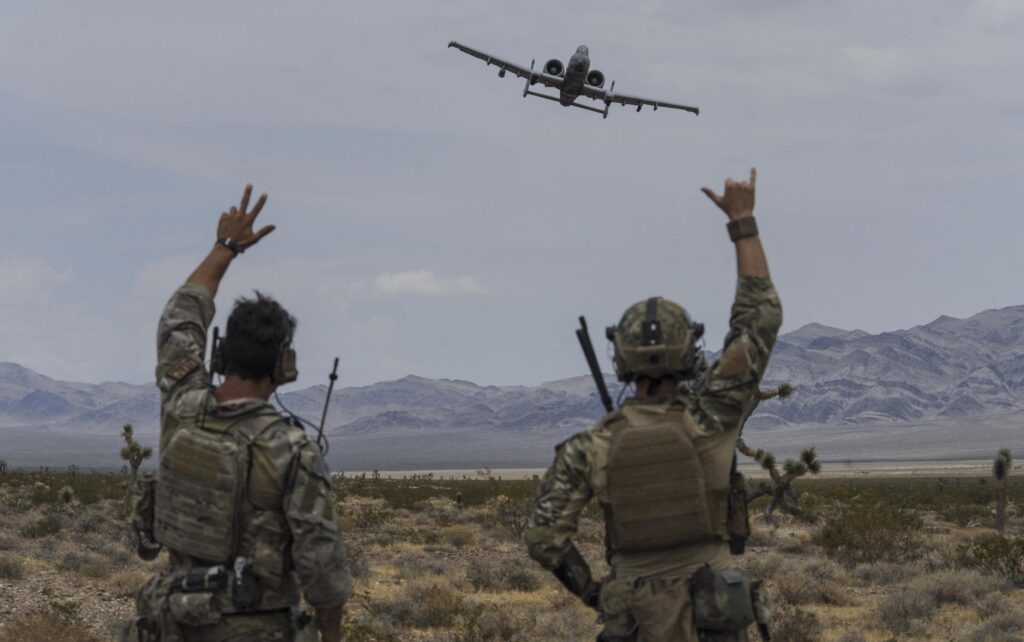
Air Force JTACs (Joint Terminal Attack Controllers) wave to an A-10 during training for close air support.
AUSA: How do you coordinate foot soldiers moving four miles per hour with fighter jets moving 1,500 mph? To address the differences in speed and range, the Army’s Training & Doctrine Command is already revising its new “battlefield framework” – which was first circulated just in July – to open up the Army’s traditional geographic zones and better reflect the far-ranging flexibility of airpower.
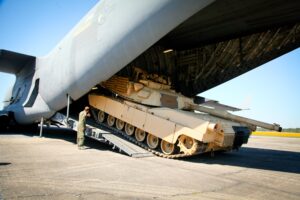
An Army M1 Abrams tank is loaded onto an Air Force C-17 transport.
This close cooperation on the concept for future warfare known as Multi-Domain Battle, which seeks to fight adversaries simultaneously in land, air, sea, space, and cyberspace is all the more remarkable because the four armed services don’t always work together well. Each one tends to wrestle with its own deep-rooted culture and a reflexive rejection of ideas “not invented here.”
But in this case, there’s real give and take, and not only on the margins. The two services are tackling high-stakes issues of how to organize, plan and command operations in the face of high-tech adversaries like Russia and China. What the Army and the Air Force choose to do will affect tactics, training, and billions in equipment purchases by both services, especially the computer networks central to modern command and control.
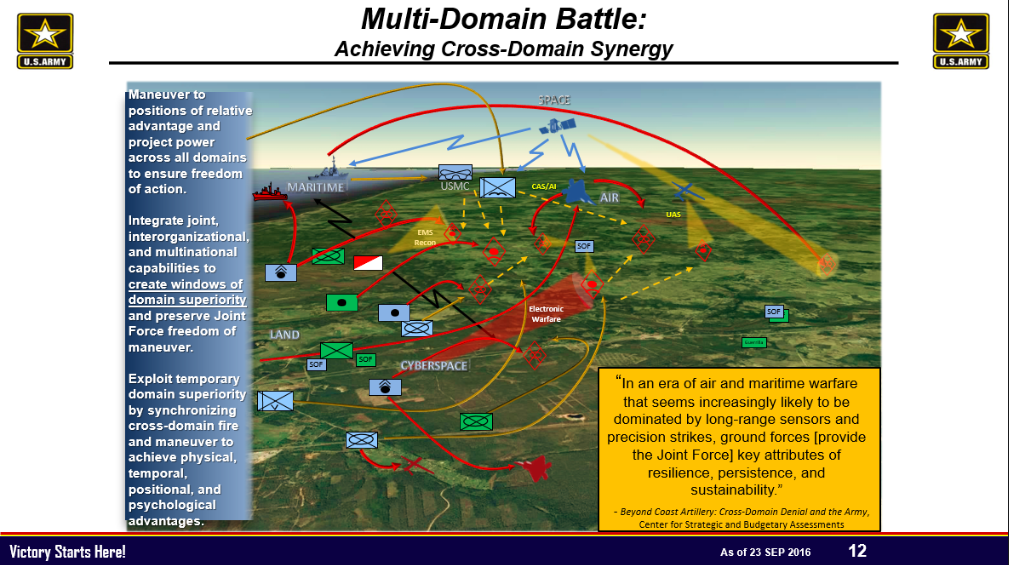
An Army slide attempting to explain the service’s new Multi-Domain Battle concept
Expanding The Battlefield
The most visually striking difference is how the Army keeps expanding its “battlefield framework.” This is a division of a war zone into different areas with different dangers and missions, from home base to the front line to enemy territory. At this week’s Association of the US Army conference, even as Training & Doctrine Command was promulgating one version of the framework in the latest draft of its official Multi-Domain Battle concept, TRADOC commander Gen. David Perkins was showing reporters a radical revision that reflects Air Force input.
To understand the changes, it’s best to start with the original battlefield framework, the one today’s generals grew up on. It comes from the Cold War doctrine called AirLand Battle, produced by a previous Army-Air Force collaboration, and it’s relatively straightforward:

AirLand Battle’s geographical division of responsibility.
The three main zones in AirLand Battle reflected a revolution in Army thinking at the time. The idea of the “rear” area is an old one. It’s the supposedly safer zone where troops can rest and reform without constant fear of attack — albeit they were still at risk from Soviet airstrikes and armored breakthroughs — and where unarmored Humvees and other trucks can do supply runs (a sanctuary that did not exist in Afghanistan or Iraq). The innovation is dividing the area of active combat into “close” – where both sides’ ground troops clash – and “deep” – where Air Force airstrikes, Army attack helicopters, and long-range artillery such as ATACMS missiles ravage the enemy’s reinforcements before they bring their power to bear in the close fight. It’s this doctrine that guided two successful wars against Saddam Hussein, in 1991 and 2003.
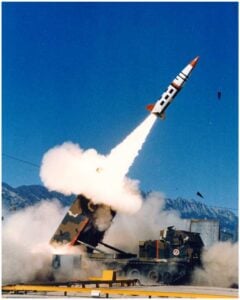
Army Tactical Missile System (ATACMS) launch
Multi-Domain Battle expands on AirLand Battle’s three-zone framework. Now that our enemies increasingly have long-range weapons – not only precision-guided missiles but cyber warfare, disinformation, and terrorist proxies – the battle can start much earlier, potentially before US troops ever leave home base. In particular, with adversaries building up anti-aircraft and anti-ship systems known as Anti-Access/Area Denial (A2/AD) systems, the US Army can no longer take for granted that the Air Force and Navy can get it to the battlefront on time or intact. Not to mention how information and cyber operations will shape things even before the first shots are fired.
So the old rear-deep-close triad remains at the center of the expanded battlespace, but the Army’s added new zones on either side. These show the new ways and longer ranges at which the enemy can interfere with US support operations and how we can interfere with them even deeper into their territory than AirLand Battle’s “deep” zone. This is how it looks in the current Multi-Domain Battle paper:

The Army’s new six-zone “battlefield framework” extends far beyond the warzone envisioned in the classic AirLand Battle doctrine.
One of my first reactions when I saw this expanded, six-zone framework back in July was to wince at its asymmetry. (I’m a “little” compulsive). The friendly space on the left side of the battlefront (i.e. the close combat area) is divided into three zones – the old AirLand Battle tactical rear plus new operational and strategic support areas – but the enemy space on the right is only divided into two – the old deep zone plus “operational deep fires.”
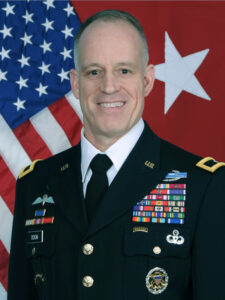
Brig. Gen. Mark Odom
When I got to ask TRADOC’s chief concept developer, Brig. Gen. Mark Odom, about this, he acknowledged things could be subdivided further, but he doubted that we needed to make such fine distinctions on the enemy’s side of the board. (On the friendly side, he said, you need more nuance because the military operates under different doctrinal and legal regimes on US territory vs. the oceans vs. allied soil). The key distinction, he said, was that Army forces could physically penetrate the deep zone, but they could only reach the operational deep fires area with long-range missiles and cyber attacks.
After consulting with the Air Force, the Army added a seventh zone. They split the area beyond the deep zone into two. They kept the first draft’s operational deep fires area, where Army ground forces couldn’t go but Army fires could reach. Then they added a new strategic deep fires zone, beyond the Army’s maximum range but still vulnerable to Air Force, Navy, and Marine aircraft – and all four services’ cyber attacks. But that’s hardly the only change:
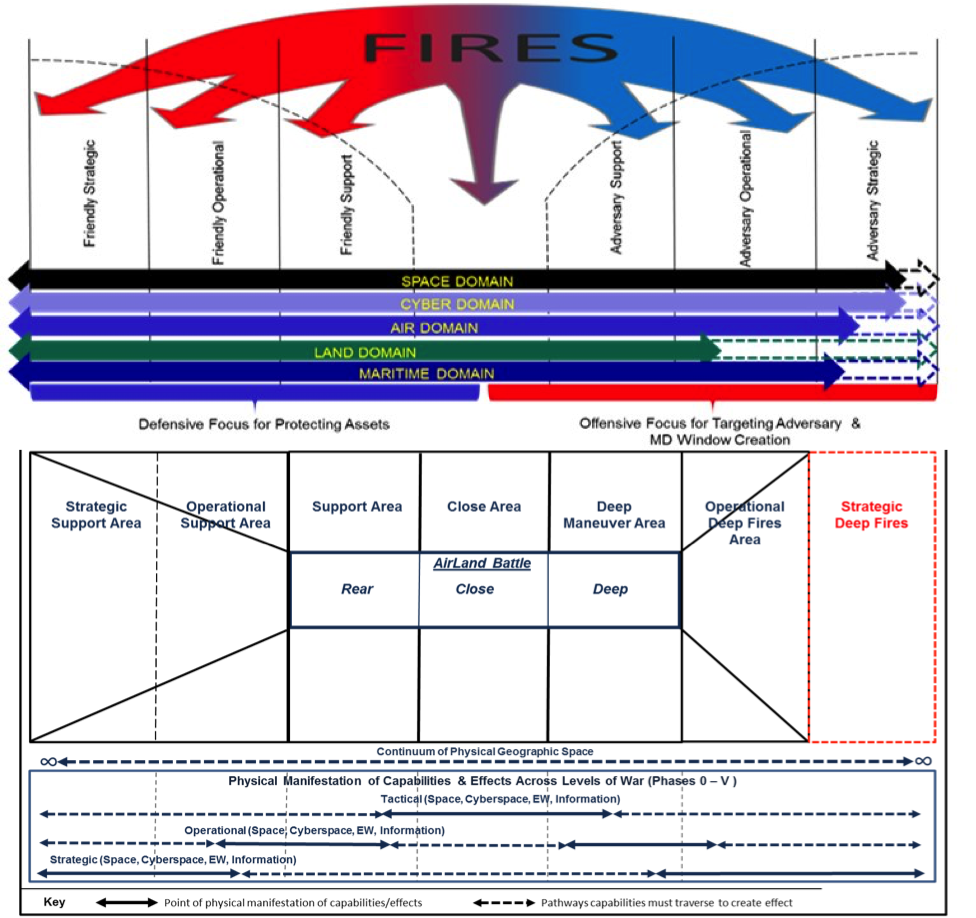
The latest MDB battlefield framework. It adds a seventh zone for areas beyond Army’s reach, but not the Air Force’s.
The latest battlefield framework tries to accommodate the reach and flexibility of the Air Force not only by adding a seventh zone, but also by superimposing – in vivid color, even – the factors linking all the zones. At the top, raining down into every zone, are “Fires,” which in Army jargon means not only artillery and missiles but also intangibles like cyber and electronic warfare.
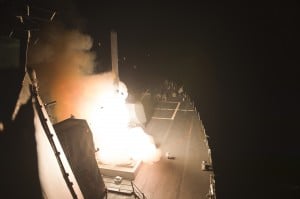
A Navy ship launches a Tomahawk cruise missile against a target deep inland in Syria
A little further down, colored bars indicate how the five domains of land, sea, air, space, and cyberspace can be used to affect all seven zones as well. There’s one notable exception that shows remarkable modesty and self-awareness on the Army’s point. The land domain, where the Army itself operates, can’t reach the enemy’s rearmost areas.
This is almost certainly not the final form of the framework. For one thing, it somewhat awkwardly kludges Army and Air Force schemata together, rather than integrating them seamlessly in the way Multi-Domain Battle advocates. For another, the concept needs to be refined in wargames and by experimental units before it’s finalized. But it nevertheless captures something essential about the interaction between land- and airpower.
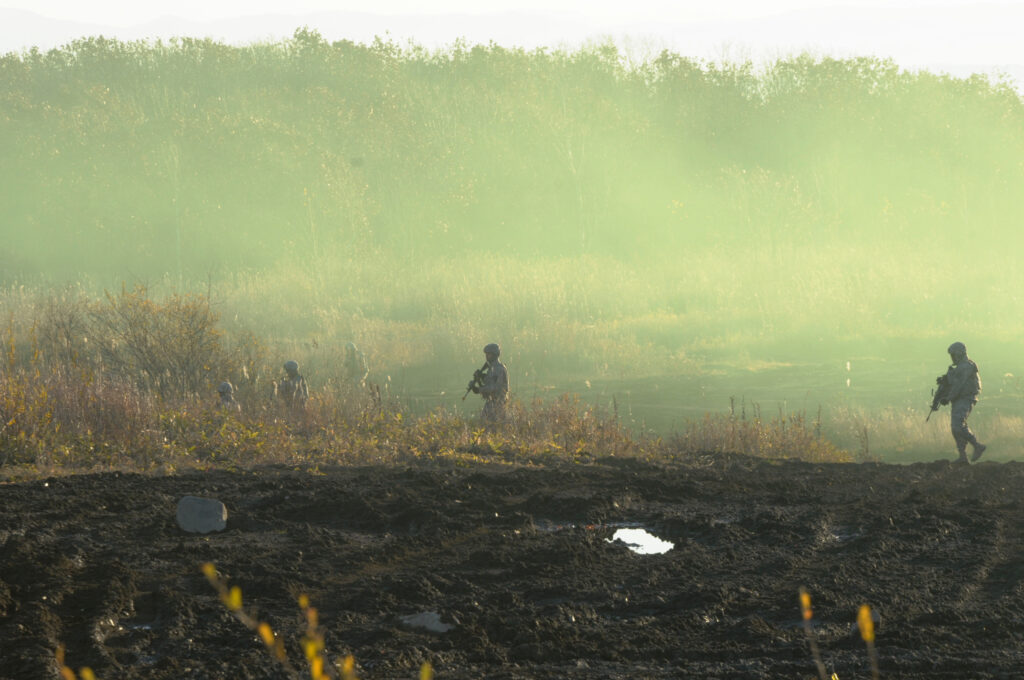
Different Physics, Different Philosophies
The revised battlefield framework tries to capture how a single aircraft, on a single sortie, can conduct multiple missions over multiple Army units, Perkins told reporters.
Why do the Army and Air Force have such different perspectives? “Part of it is the physics,” he said. A single infantry division has tens of thousands of soldiers, dispersed over terrain that interferes with movement, radio communications, and line of sight, and – even in the constantly relocating formations envisioned by Army Chief of Staff Mark Milley – only moving four to 40 to 140 miles an hour, depending whether they’re on foot, in ground vehicles or in helicopters. There’s no way for a single headquarters to control so much complexity directly, but no one element can move too far. So the Army relies on a carefully nested hierarchy – corps, division, brigade, battalion, company, platoon, squad, fire team – where each level has its own clearly defined personnel, assets and area of responsibility.

Gen. David Perkins
“The Air Force, though, is not that way at all,” Perkins continued. It has far fewer independently moving pieces – hundreds and thousands of aircraft as opposed to hundreds of thousands of soldiers – but each of those pieces can move across the entire board in a single bound. Stealth bombers routinely take off from the continental United States to strike targets overseas, sometimes in direct support of individual squads on the ground. Especially with modern multi-mission aircraft like the F-35, a single plane can perform different roles – strike, reconnaissance, electronic warfare and even cyber – for different Army units in different locations in a single mission. Then it flies home and the next day, or hour, or minute, an entirely different aircraft can support the same ground troops.
“We often speak past each other between airmen and soldiers,” said Air Force Gen. Mike Holmes, who as head of Air Combat Command is Gen. Perkins’ chief partner on Multi-Domain Battle. “When TRADOC lays out their battlefield construct, they rightfully start off with lines on the ground and echelons and who will be responsible for which area,” Holmes said at AUSA. “We kind of look at it and we say, ‘but everything I have can work in any of those areas’…because of the range and because of the flexibility.”
The same is true for the enemy’s ballistic missiles, cruise missiles, aircraft, and cyber warfare. “Although we’ll still have to think about boundaries and echelons, for the enemy’s long-range precision fires, they don’t really see that,” Holmes continued. “For the enemy, there are no boundaries….That means there are no hiding places for us on the battlefield, whether that’s our ground echelons in the close battle or our bases and ports.”

Gen. Mike Holmes
How do you reconcile these two ways of organizing the world? You can’t jam the Air Force’s round pegs into the Army’s square holes, according to Perkins. “We don’t have an echelon to line up with every one of your echelons (in the Air Force). Every squad’s not getting a Joint Strike Fighter.” Instead of imposing one service’s battlefield framework on the other, he emphasized, you need a new one that combines both.
Implementing these ideas will require new technology. While today the Army and Air Force have separate and largely incompatible communications networks, Multi-Domain Battle requires a single, seamless system that can connect aircraft and ground troops literally on the fly, depending on which plane is equipped and positioned to support that squad at that moment – and then connect both parties to different partners moments later. It’s not impossible. Cellphone networks already have some of the necessary flexibility – you rarely notice when your phone switches which tower it’s routing through as you drive along – but doing it on the battlefield, under cyber and electronic attack, is vastly more difficult. (Minimizing requirements for bandwidth-hogging video and imagery might make things easier.) The Army’s struggled enough just getting its current flagship network, WIN-T, to function on the move, and Gen. Milley was so dissatisfied with it that he cut short further procurement.
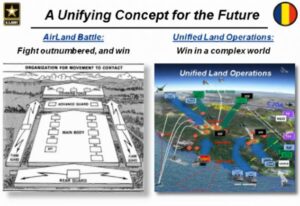
Army combat doctrine has grown more complex since the 1980s heyday of AirLand Battle.
More fundamental than new technology, however, is the need for a new kind of thinking. AirLand Battle drew lines on the map to say where the Air Force could strike at will and where (closer to friendly ground troops) it had to defer to Army control. Multi-Domain Battle, from the start, must allow any service to take action anywhere – without playing jurisdictional mother-may-I.
“We have to get away from this idea of domain ownership, (of) how do I own this domain, where do I put up the stakes, if you come into my domain you need to clear it with me, etc.,” Perkins told the audience at AUSA. Instead, he said, the focus should be “how do we use the domains, because everybody has to use them. They have to maneuver not only in ‘their’ domain but also through others.”
Subscribe to our newsletter
Promotions, new products and sales. Directly to your inbox.
